The idea of companion planting is to grow plants that compliment each other in some way. companion plants for cherry trees are mainly used to attract helpful pollinators like bees. Cherry trees blossom very early in spring, so it’s vital to get the flowers pollinated by early pollinators if you want those blossoms to become cherries.
companion plants for cherry trees
There are a few things to consider when growing cherry trees, not least of all, how wet the ground is. Cherries don’t tolerate standing water, so if your area is very wet and you have sodden soil maybe cherries aren’t the right tree for you. There are ways round this of course, planting your cherry tree in a large pot for example.
If you still want to grow your cherry in the ground, try planting weeping willow nearby. Willow trees thrive in damp soils and will relieve the soil of much of that standing water. Tart cherries are less problematic as they can tolerate much harsher conditions than their sweet cousins.
How Long Do Cherry Trees Last?
Most cherry trees have a productive lifespan of around 16-20 years, after which time they should be replaced. That doesn’t mean they will die after this time, just that will not be so productive.
When To Plant Cherry Trees
The best time to plant bare rooted cherry trees is either in late Autumn or early Spring, before there is any growth on the plant at all. This period is called dormancy and by planting the tree at this time it will awake from it’s Winter sleep and start growing.
Pot grown cherry trees can be planted at any time but Spring and Autumn are still favourable. For more in depth advice on how to grow cherry trees follow this link to the RHS website.
Companion Planting Cherry Trees
Assuming your soil is not water logged, below is a list of plants to grow with cherry trees. Let’s start with other trees as I’ve already mentioned willows.
Companion Plants For Cherry Trees- Trees
Willow trees have already featured but I’ll start with them for consistancy.
Weeping Willows and Cherry Trees
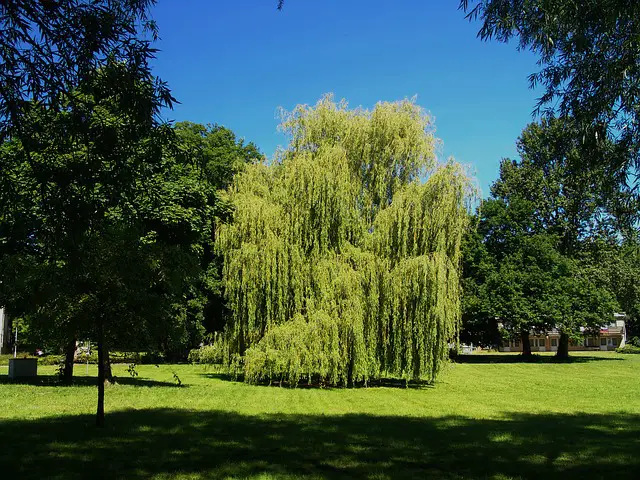
Willow trees thrive in damp conditions and are often found growing along river banks. They will create conditions best suited to cherry trees if grown near by. This is only necessary in areas where standing water is prevalent.
Ash Trees and Cherry Trees
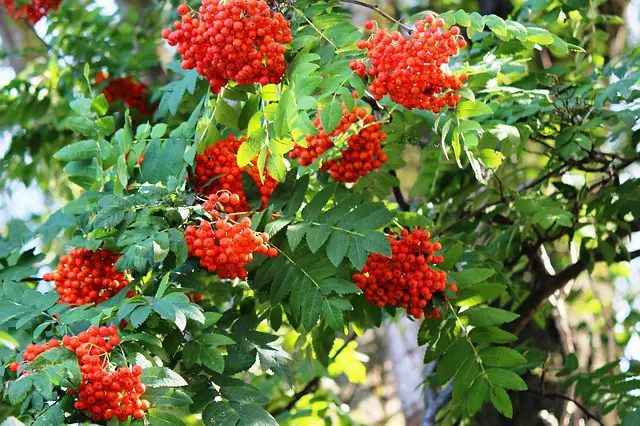
Not a problem in the UK but in areas of the world where Japanese beetles are problematic, ash trees act as a deterrent to these scarab like pests.
Oak Trees and Cherry Trees

Oak trees are also supposed to deter Japanes beetles so are good to grow for preventative purposes.
Pear Trees and Cherry Trees
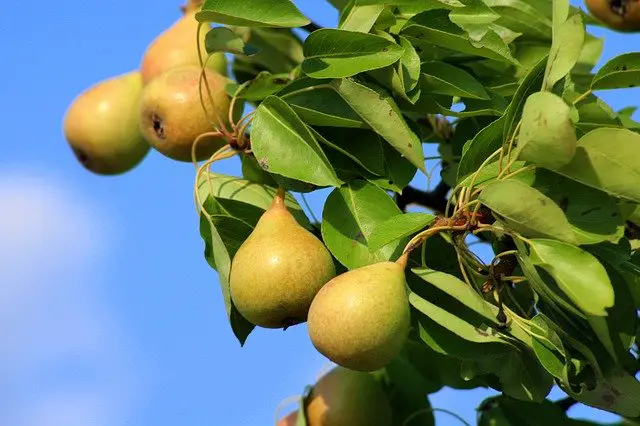
The Japanese beetle is not attracted by pear trees at all and so surrounding your cherries with pears will help to disguise them from the Japanese beetles.
Persimmon Trees and Cherry Trees
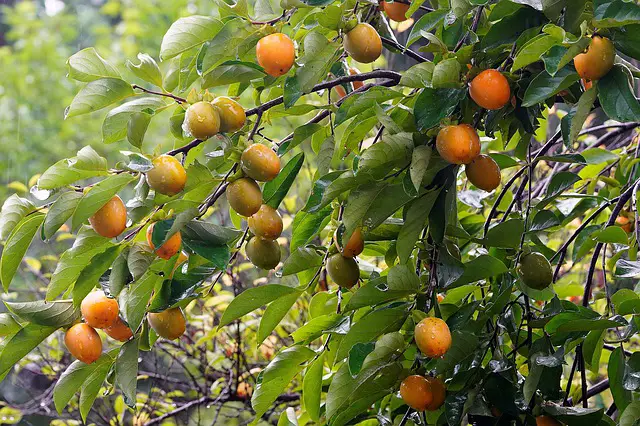
Just like pears, persimmons hold no attraction to Japanese beetles and so can also be used to help disguise your cherry trees. It’s probably a good idea to plant a selection of other trees near the cherries. Japanese beetles can be so destructive and will decimate a tree in a very short time.
Cherry Trees and Cherry Trees
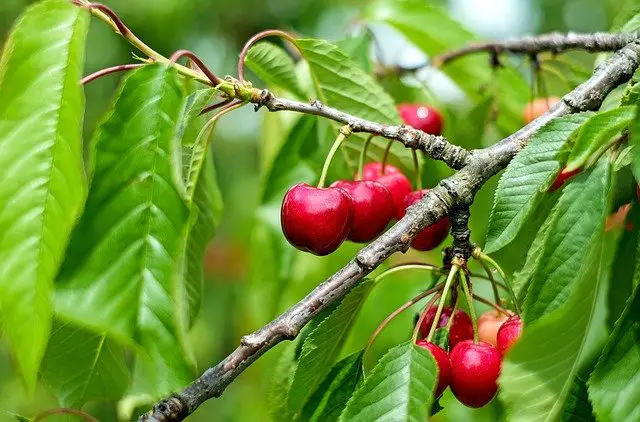
To ensure pollinatin it is always better to have more than one cherry tree. There are self fertile cherries but even they will do better grown with others. On the subject of pollination, you can gently brush each blossom with a childs paint brush to ensure pollination.
Companion Plants For Cherry Trees- Herbs
Herbs are useful plants and should be grown in every garden even if you don’t use them in the kitchen. They look good, smell good and most importantly are beneficial to your plants.
Rosemary and Cherry Trees
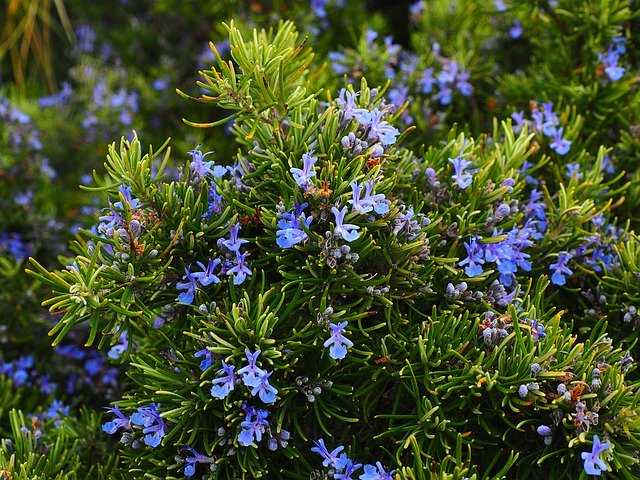
This strongly aromatic herb will help to disguise the cherry trees from pests whilst attraacting helpful pollinators. As rosemary is in bloom early in the season, its blooms are available to pollinators just when the cherry is in blossom too. For more information on companion planting rosemary follow this link.
Lavender and Cherry Trees
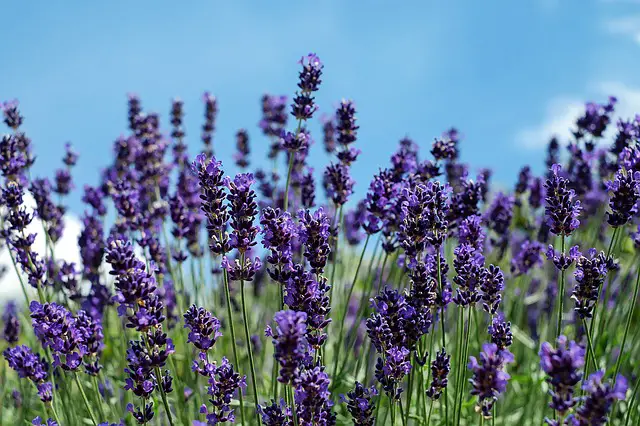
Another rich, aromatic herb, lavender will also attract pollinators and disguise the cherry tree from harmful pests. To find out more about companion planting lavender click here.
Caraway and Cherry Trees
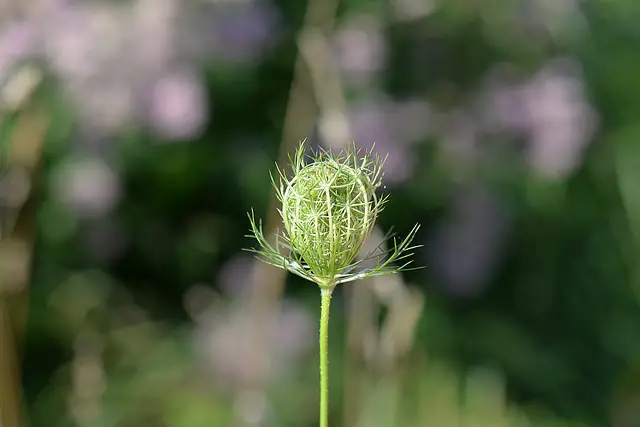
The deep roots of this herb break up the soil and assist drainage. This deep root action also helps to release beneficial deep buried nutrients.
Marjoram and Cherry Trees
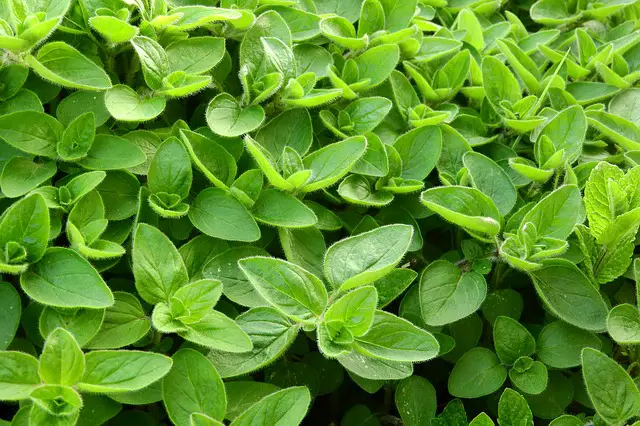
This herb will improve the general health of all plants close by. Grow marjoram to give your cherries a health boost.
Comfrey and Cherry Trees
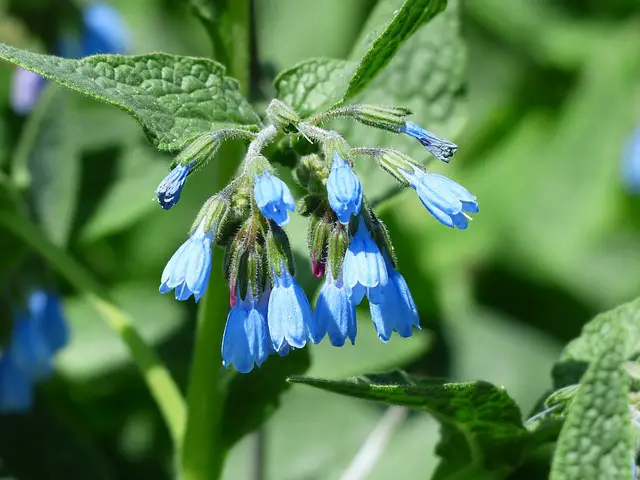
Another herb with many useful properties, comfrey has an extremely deep tap root. It reaches depths that other plants can’t and releases nutrients from dep in the soil. This tap root will also break up the soil allowing better drainage which is benefeicial to cherry trees in particular.
Parsley and Cherry Trees
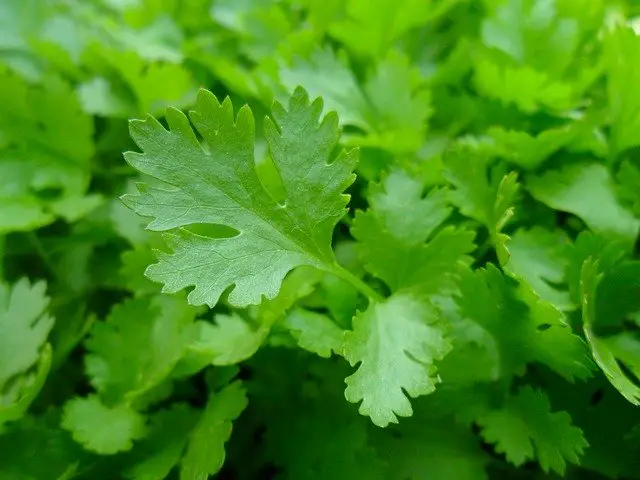
Parsley, once in bloom will attract many beneficial insects including bees, hoverflies, and parasitic wasps.
Lovage and Cherry Trees
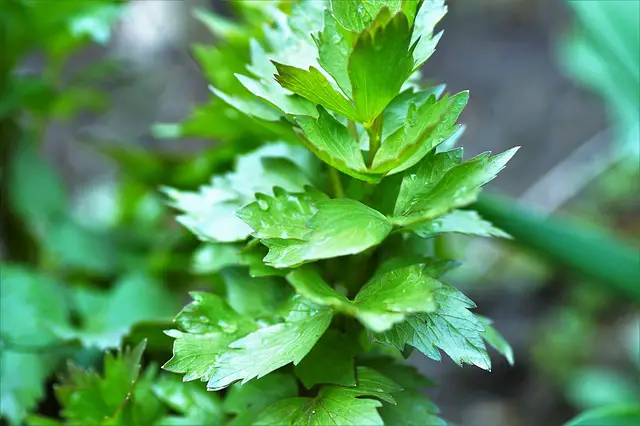
Anything that grows close to lovage will grow better. It’s one of those herbs that improves the general health of all of it’s neighbours.
Dill and Cherry Trees
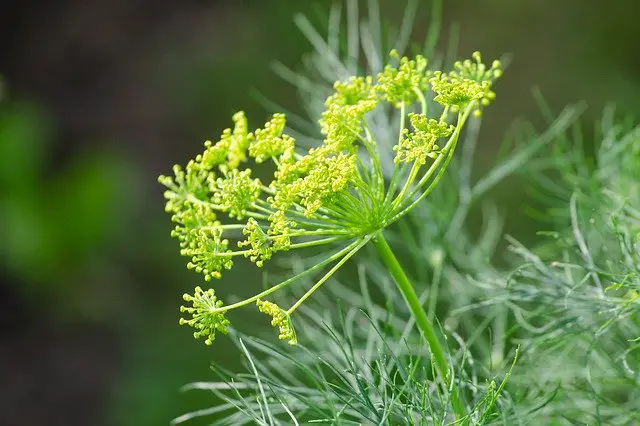
This herb attracts a plethora of beneficial insects to the garden, and to cherry trees and other stone fruit trees in particular.
Coriander (Cilantro) and Cherry Trees
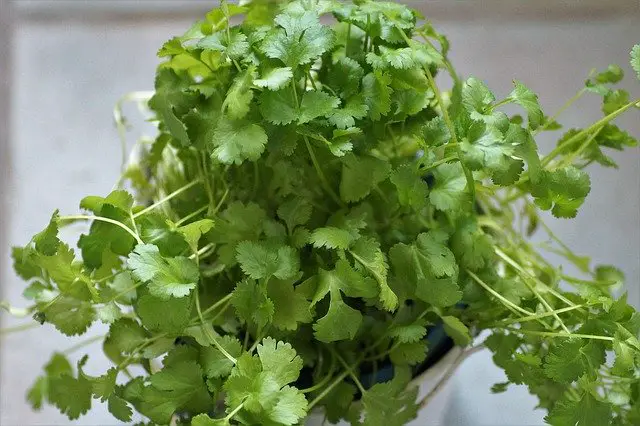
Another herb that attracts many beneficial insects, coriander will do well growing underneath cherry trees.
Thyme and Cherry Trees
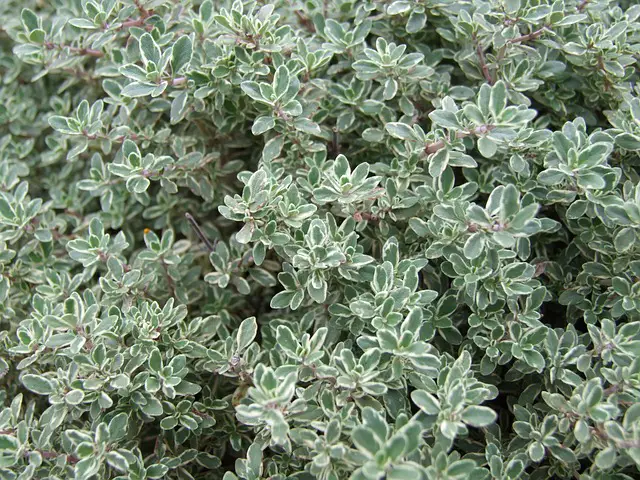
This low growing, fast spreading herb will attract many beneficial insects to your garden.
Companion Plants For Cherry Trees- Flowers
Flowering plants are a great source of food for many beneficial insects and you should not underestimate just how important they can be.
Dandelions and Cherry Trees

This one might surprise you, but don’t dismiss them out of hand. Dandelion flower heads are made from clusters of flowers, each one containing the nectar that insects require. They are also one of the earliest flowers to bloom which is ideal for cherry trees which also bloom early.
Once the solitary bees or mason bees are attracted to the dandelions they’ll soon find the cherry blossom. To learn much more on the benefits of companion planting dandelions follow this link.
Lilac and Cherry Trees
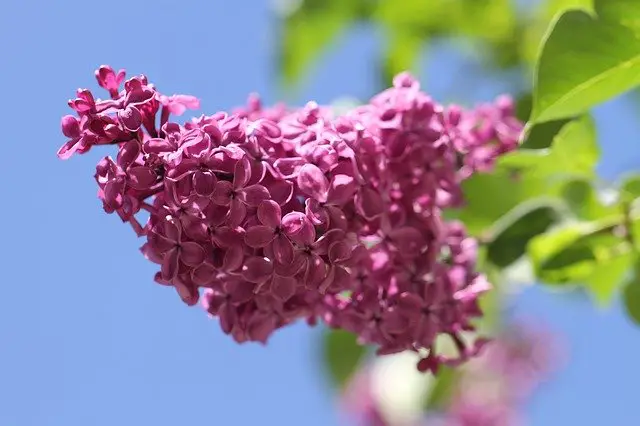
Growing lilacs close to cherry trees, will attract many beneficial insects both pollinators and predators. The lilac bushes will also provide a wind break for young cherry trees.
Honeysuckle and Cherry Trees

The sweet smelling honeysuckle flowers attract many beneficial insects like bees and butterflies.
Marigolds and Cherry Trees
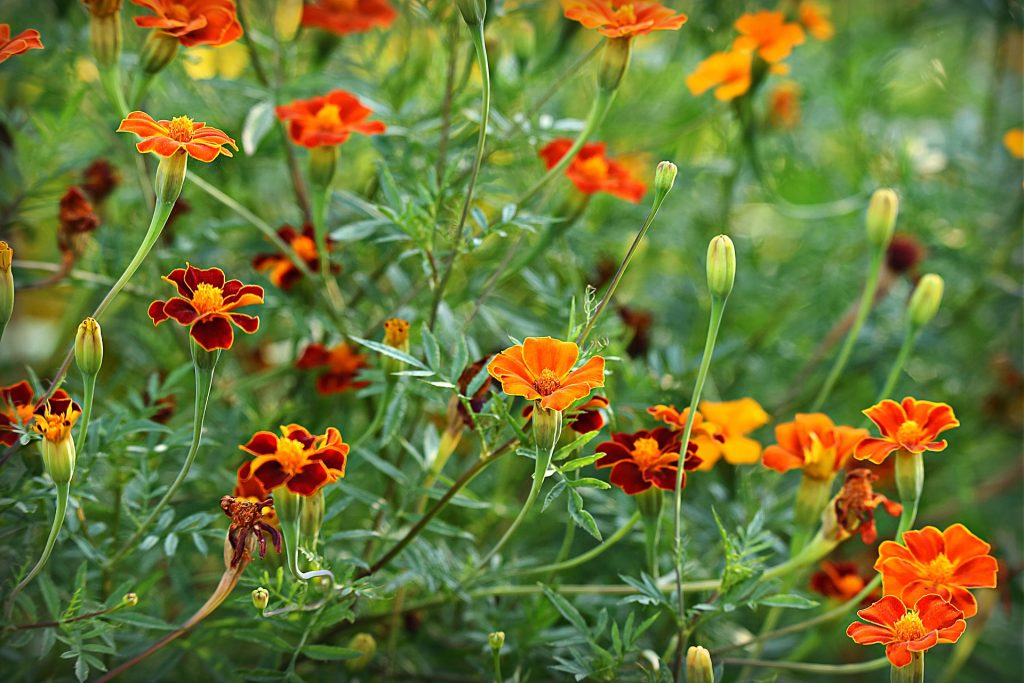
The roots of the marigold exude a chemical that repels nematodes. Nematodes are minute creatures that are parasites and can cause serious damage to plants and trees. Growing marigolds around your cherry trees will reduce the risk of nematode damage.
Plus marigolds will attract many useful pollinators to your garden. For more information on marigold companion planting follow this link.
Geraniums and Cherry Trees

To keep a constant supply of bees and other pollinators coming to your garden you need a constant supply of nectar. Growing geraniums will provide food for the beneficial insects when the cherry blosssom is gone.
Rosa Rugosa and Cherry Trees
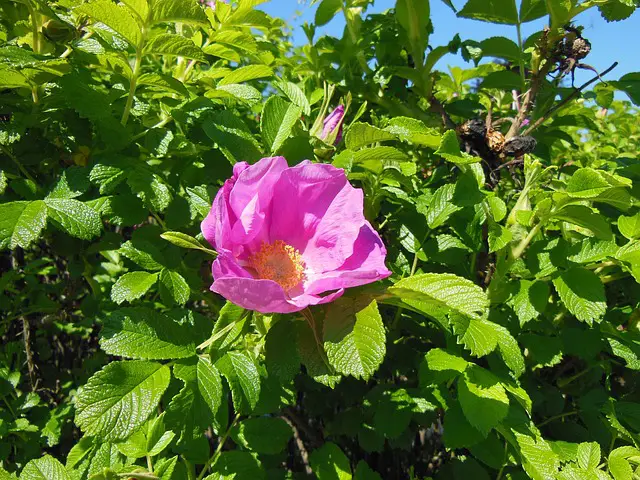
Another popular flowering shrub, rosa rugosa provides nectar and shelter for many beneficial insects.
What Not To Grow With Cherry Trees
There are many plants that grow well in each others company, but there are some that should never be grown near anything else. To ensure the successful growth of your cherry tree the following should be kept as far away as possible.
Walnut Trees and Cherry Trees

The black walnut actually prevents other plants from growing around it. This is due to a chemical it exudes through it’s roots that prevents plants from growing.

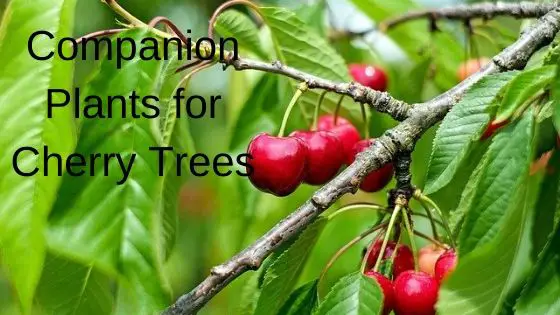
I’m ordering plants for my garden from the Burgess gardening catalog, and I’m very interested in the science behind how new strains of edible plants are created. For the Tophat Blueberry it says ‘Tophat Blueberry is a recent dwarf blueberry variety released by the Michigan State Experiment Station.’
Do you have any sort of research papers or journals that are available for the public to read? Unlike most of the panicky public nowadays, I find genetic modification and hybridization fascinating, and would like to know more about how this lovely little plant was created.
If I have contacted the wrong department, please let me know, and if you’re able, direct me to the correct one.
Kind regards,
Lorelei Cosner
Hi Lorelei,
I have no direct knowledge of the science behind how new strains are created, but I have found a few links to scholarly articles that might be of interest to you. They are
https://journals.plos.org/plosone/article?id=10.1371/journal.pone.0216299
https://journals.ashs.org/hortsci/view/journals/hortsci/53/2/article-p159.xml
https://journals.ashs.org/hortsci/view/journals/hortsci/53/7/article-p1045.xml
https://www.ncbi.nlm.nih.gov/pmc/articles/PMC6488077/
I hope these are of some help and good luck with your Tophat blueberry and your garden.
All the best
Steve